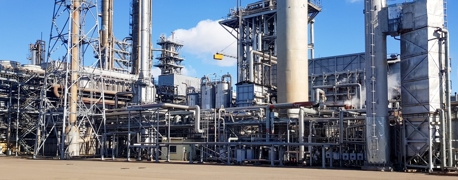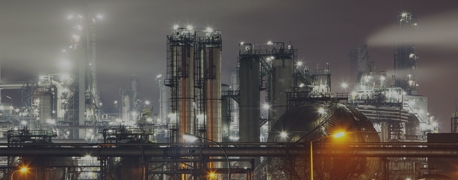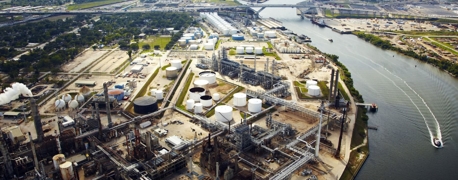Contaminated Superfund Sites: Is There One in Your Backyard?

Imagine living in a place where the land beneath your feet, the very soil where your children play, and the water you use holds toxic secrets from the past. This is the reality for residents near the 1,329 Superfund sites located across the country, locations identified by the Environmental Protection Agency (EPA) as containing hazardous contaminants that present risks to communities and the environment. The EPA is working to clean up these sites, but it takes time.
Such is the story of the Brio Superfund Site near Friendswood, Texas, which has a complex history of contamination and remediation efforts that span several decades. Initially, this area hosted Brio Refining Inc. and operated as a chemical reprocessing facility from the 1950s until its closure in 1982. Unknown to many at the time, the disposal and management practices for toxic waste at the site were insufficient, leading to severe environmental and health hazards.
The adjacent Southbend subdivision and Weber Elementary School were heavily affected, with residents developing chronic illnesses and birth defects. The school closed in 1992. 667 homes in the subdivision foreclosed. Recognizing the site's environmental hazards, the EPA designated the area, roughly the size of 44 football fields, a Superfund site.
Efforts to address the contamination included installing barriers and pumping out hazardous gases, and the Brio Superfund Site was removed from the EPA’s National Priorities List in 2006. It now undergoes five-year inspections but has not reached the goal of safe, unrestricted use. Development continues around the site, but the Brio area itself is akin to a ghost town.
What Is a Superfund Site? An Overview of the CERCLA.
A Superfund site is a location contaminated with hazardous substances identified by the EPA for cleanup under the Comprehensive Environmental Response, Compensation, and Liability Act (CERCLA) of 1980. The Superfund program aims to identify, prioritize, and remediate these sites, holding responsible parties accountable for cleanup costs and ensuring affected areas are restored to safe conditions.
One of the catalysts for the Superfund program was the Love Canal incident in Niagara Falls, New York. In the late 1970s, Love Canal, a neighborhood built on an old industrial dumpsite, became the epicenter of a significant environmental health crisis. During the 1940s and 1950s, the canal was used to dispose of over 21,000 tons of toxic chemical waste. These hazardous substances eventually leaked into the environment, contaminating soil, groundwater, and air, leading to alarming rates of birth defects, miscarriages, and cancers among the residents.
The Valley of the Drums in Bullitt County, Kentucky, presented a similar problem. This site, named for the thousands of drums containing industrial waste that were improperly stored and began leaking into the surrounding environment, became a symbol of the environmental degradation and health risks associated with such negligence. The Valley of the Drums discovery and the Love Canal incident spotlighted the dangers of poor hazardous waste management, sparking widespread media coverage and public calls for federal intervention to avert similar environmental disasters.
Congress enacted CERCLA on December 11, 1980. As of August 17, 2022, there were 1,329 Superfund sites on the National Priorities List in the United States. Additionally, 43 sites have been proposed for inclusion on the list, and 452 sites have been cleaned up and removed.
A Superfund Success Story: The Marathon Battery Company Superfund Site
The Marathon Battery Company Superfund Site, located in Cold Spring, NY, serves as an example of successful environmental remediation and transformation. Operating from the 1950s through the 1970s, this nickel-cadmium battery factory had a significant environmental impact, discharging contaminated wastewater into the Hudson River, as well as a neighboring cove and marsh, and releasing contaminated dust into nearby residential areas. Additionally, a small plume of contaminated groundwater was identified on the former factory grounds.
The EPA designated the area a Superfund site in 1981. Between 1986 and 1989, several cleanup actions were decided upon, including dredging and removing contaminated sediments from the Hudson River and nearby areas, excavating polluted soils, and demolishing the source factory. Restoration efforts for the marsh and groundwater were also implemented from 1993 to 1995, leading to the site's removal from the Superfund list in 1996, with continued monitoring to maintain environmental health.
The former battery factory site is being redeveloped, while adjacent lands, including a marsh and an 87-acre tract, have become The West Point Foundry Preserve, a public park designated as a National Historic Site.
Companies & Processes that Create Hazardous Waste Sites
Hazardous waste sites are created by specific processes and operations, typically industrial. The processes themselves and improper waste disposal can pollute the air, soil, and groundwater. This puts all living things in the area at risk and jeopardizes entire ecosystems. Here’s a glimpse at the types of companies and processes that are responsible for most Superfund sites in the U.S.
Manufacturing & Chemical Production
A significant number of Superfund sites originate from manufacturing and chemical production operations. These companies often handled or produced hazardous substances such as solvents, pesticides, and industrial chemicals, which were sometimes improperly disposed of or leaked into the environment. The manufacturing process itself, along with waste disposal practices that did not adequately protect the environment, has resulted in soil and groundwater contamination at numerous sites.
Mining & Metal Processing
Mining and metal processing industries are also major contributors to Superfund sites. These operations can release heavy metals like lead, arsenic, and mercury into the environment, as well as acid mine drainage, which severely impacts water quality. The legacy of mining operations, particularly those that ceased before modern environmental regulations were in place, includes extensive soil and water contamination.
Petroleum Refining & Storage
The petroleum industry, including refineries and storage facilities, has been responsible for significant environmental contamination. Leaks and spills of petroleum products can contaminate soil and groundwater with hazardous substances like benzene, toluene, ethylbenzene, and xylene. The nature of petroleum products means that they can spread widely in the environment, creating large plumes of contaminated groundwater that are challenging to remediate.
Waste Management & Landfills
Improper waste management practices and landfill operations have also led to the creation of Superfund sites. Before the enactment of strict waste management regulations, hazardous waste was often disposed of in landfills that lacked proper liners or containment measures, leading to leachate generation and the contamination of surrounding soil and groundwater.
Military & Defense Operations
Military and defense-related activities have contributed to contamination at numerous locations. These sites are contaminated with a variety of pollutants, including explosives, solvents used in weapon maintenance, and radioactive materials from nuclear weapons research and testing. The complexity and scale of contamination at these sites often require extensive cleanup efforts.
Agricultural Practices
While less commonly associated with Superfund sites, agricultural practices, including the use of pesticides and fertilizers, have led to contamination issues in some areas. Runoff from agricultural fields can carry harmful chemicals into nearby water bodies, impacting water quality and aquatic ecosystems.
Who Pays for Superfund Remediation?
The responsibility for the cleanup of Superfund sites falls on the parties responsible for the contamination, reflecting the "polluter pays" principle underlying the Superfund program. However, CERCLA also established a tax on the petroleum and chemical industries, creating a trust fund to provide for cleanup when no responsible party can be found. Within the first five years of its creation, CERCLA collected $1.6 billion in these taxes.
Health Risks Associated with Superfund Locations
Living near a Superfund like Brio or the now remediated Marathon Battery Company site can expose residents to a range of health risks. Studies have shown that proximity to these sites is associated with increased rates of cancer, reproductive disorders, and other chronic health conditions. For instance, the 813-acre LCP Chemicals site in Brunswick, Georgia, has left its mark on the environment with high levels of mercury, PCBs, and dioxins, posing significant health risks to the local population. The consumption of locally caught fish contaminated with PCBs from the LCP site has been a particular concern, with advisories in place warning residents about the risks.
The dangers of living near Superfund sites are compounded by natural disasters. Hurricanes and heavy weather events can disturb and spread the contained pollutants, creating new exposure pathways and increasing health risks for nearby communities. Understanding Superfund site contaminants, their sources, and potential health impacts is crucial for mitigating risks to human health and the environment. Here's an overview of common contaminants found at these sites:
Lead
Lead is a toxic metal that can cause significant health problems, particularly in children, including developmental issues, neurological damage, and decreased kidney function. At Superfund sites, lead contamination often stems from past industrial activities such as mining, smelting, and the disposal of industrial waste. The EPA's approach to addressing lead involves detailed risk assessments and the application of specific remediation technologies to reduce exposure risks.
Asbestos
Asbestos, a group of naturally occurring fibrous minerals, is known for its durability and resistance to heat, fire, and chemicals. However, asbestos fibers can cause serious health problems, including lung cancer, mesothelioma, and asbestosis when inhaled or ingested. Superfund sites with asbestos contamination require careful management to prevent the airborne release of fibers, including policies for safe handling, removal, and disposal of asbestos-containing materials.
Dioxin
Dioxins refer to a group of chemically related compounds that are persistent environmental pollutants. Dioxins are primarily produced through combustion processes and can accumulate in the food chain, leading to significant exposure in humans. Exposure to dioxins has been linked to cancer, reproductive and developmental problems, and immune system damage. Characterizing dioxin-contaminated soil is essential for determining the extent of contamination and for developing effective cleanup strategies.
Soil Bioavailability
Soil bioavailability plays a crucial role in assessing human exposure risks at Superfund sites. This refers to the fraction of a contaminant in the soil that is available for absorption when ingested or inhaled, or if it comes into contact with the skin. Understanding the bioavailability of contaminants, such as heavy metals and organic compounds, helps in accurately assessing exposure risks and tailoring remediation efforts to effectively reduce human health risks.
Radiation
Radiation contamination at Superfund sites can come from a variety of sources, including abandoned mine sites, nuclear weapons production facilities, and radioactive waste disposal sites. Exposure to ionizing radiation can increase the risk of cancer and cause a range of health effects depending on the dose and duration of exposure. Addressing radiation involves assessing the level of contamination, implementing controls to limit exposure, and remediating contaminated media to protect public health and the environment.
Each of these contaminants poses unique challenges for cleanup efforts at Superfund sites. Even after remediation has been completed, the site may not be fully clear of pollutants and will require ongoing monitoring, typically every five years. In some cases, contaminant leaks may occur again. That happened in 2010 at the Brio Superfund site, when a contaminant plume containing 1,2-dichloroethane and vinyl chloride, both known carcinogens, was discovered.
Do You Live Near a Contaminated Superfund Site?
Residents living near Superfund sites have rights under federal and state laws. They are entitled to participate in the decision-making process regarding the cleanup of sites, receive information about the contamination and its potential health impacts, and, in some cases, seek compensation for health issues or property damage attributed to the pollution. The EPA's Superfund program is responsible for ensuring that cleanup efforts are conducted safely and effectively, with the goal of reducing the health risks posed by these sites and restoring contaminated areas to safe use.
As cleanup efforts continue, the voices of affected residents serve as a powerful reminder of the human cost of environmental neglect and the need for continued vigilance in protecting public health and the environment.
To find out if you live near a Superfund site, conduct a search here.
- Categories


